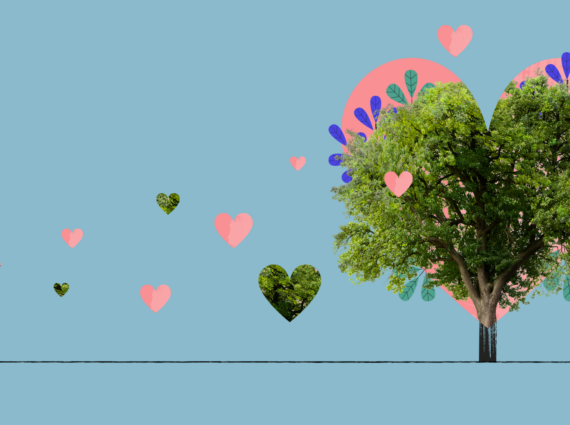Carbon emissions are a big deal these days. And rightfully so! Along with cutting back on emissions, there is a lot of talk around carbon offsetting. Companies talk about doing it. People talk about doing it. No green initiative can be considered truly green unless all their carbon emissions are offset, it seems.
But with all this talk of offsetting happening, there is little talk about what it actually entails. The logical supposition is that offsetting involves removing as much carbon from the air as is emitted. It sounds great – but what does it really involve? After all, removing carbon from the air is not easy, nor is calculating how much carbon any action or set of actions emits. So how is this done? And does it work?
At TerGo, we’ve delved deeply into these questions. What we’ve found is complicated – yet very optimistic at the same time.
What does offsetting really mean?
Basically, you calculate how much carbon you are emitting and then sequester, or capture, the equivalent amount of CO2 through mechanisms that have measurable CO2 absorbing capacities. That’s what offsetting is in its simplest form.
Sequestering carbon is usually done through organic means, with trees being the best current option as they take in CO2 for photosynthesis, one of those things we all learning in grade school that is now coming in handy.
In addition to planting trees, though, there are emerging synthetic industrial carbon capture devices and other direct source carbon capture technology, as well as some other means of avoiding emissions that are becoming more widespread.
Different types of offsetting
There are four main types of offsetting that are currently being used, to differing degrees. One particular method is head and shoulders above the rest as far as utilization and popularity. But the other three are very valid methodologies that are all seeing an increase in their usage rates as offsetting becomes more and more widespread and important.
Here are the four main types of offsetting:
Most Popular: Planting Trees
This is and has been the best way to capture carbon from the atmosphere and offset significant quantities of CO2. It’s what trees do; they take in CO2 for photosynthesis. Using their natural propensity for carbon uptake is so beneficial because of its practicality: trees can be planted almost anywhere on Earth and they require very little maintenance after planting. Furthermore, we know a great deal about how to plant them, how much carbon they absorb on average, and which trees absorb more CO2 over a set number of years. This allows for a reasonable estimate of how much CO2 can be offset based on the number of trees that are planted. For this reason, and so many more factors, continue to make tree planting continues to be the best form of carbon offsetting – though the other options are getting better at a hopeful pace.
Becoming Popular: Forest Conservation
This is a great way to store a lot of carbon – and help communities with important forest resources that do not want to develop them.
Compensating forested areas in exchange for them to refrain from cutting down trees is not a new idea, and it is unclear where exactly it originated. One of the most prominent pioneers of this model, however, is the Iwokrama International Center for Rainforest Conservation and Development – and they just happen to be one of our partner offset projects.
The model that Iwokrama applies works to offset CO2 by keeping forests standing rather than developing them. Old growth forests absorb more CO2 than newly planted trees, which makes this form of offset more potent per acre than planting. It also confers social benefits to the Iwokrama reserve, as is the case with all regions that are compensated for protecting these forests and keeping CO2 stored in the trees – they get to benefit from their forest resources without having to exploit them; a win for everybody. (If you don’t think forest conservation in the tropics impacts the entire world, check out this clip of migratory bird routes.)
Preserving forests, especially tropical forests, not only sequesters CO2, it protects wildlife biodiversity and keeps our planets ecological systems regulated. We need them; these forest conservation offsetting initiatives are crucial for so many reasons.
Less Utilized: Carbon Avoidance
This is an emerging type of offsetting that is little used at the moment – but it will become much bigger in the coming years. It is the main behind TerGo’s regular usage: avoiding carbon that would normally have entered the atmosphere by changing behaviors, and then creating offsets out of this. There are also other ways it can be done, such as the push to replace wood burning stoves with renewable methanol cookstoves in Africa. Offsets are created out of projects such as this by negating emissions in the form of the newly introduced technology – it takes away carbon emissions and is funded by the person or group that is purchasing the offsets. And, much like the other examples, this helps create a socially positive impact as well.
Carbon avoidance offsets are becoming more and more popular, for good reason.
Emerging: CCUS Industrial Applications
Some of these emerging technologies and applications are amazing – just don’t expect giant carbon-sucking fans that take ambient CO2 out of the air. At least not yet.
What we do have are a wide range of CCUS (carbon capture storage and utilization) options that can be fitted or retrofitted to certain processes such as fossil fuel burning, which cannot be carbon-free by nature. What can be done is to capture the carbon these processes emit and store it in solid form, or use it to create other products, so the carbon stays in the ground rather than released into the air. There are also some exciting new applications coming out this, such as concrete that keeps CO2 permanently locked in a solid state within blocks – and the CO2 actually makes the concrete stronger because of the bonds it creates. Imagine living in a house that is extra sturdy due to the fact that it eliminated a chunk of CO2 emissions from a fossil fuel plant. Incredible!
TerGo’s approach to offsetting
We think outside the box with a combination of traditional and innovative offsetting, all while helping real people in the process.
While TerGo’s platform utilizes TER carbon credits to offset emissions through avoidance, we support all four main forms of offsetting. For us, it’s important to have a mix of everything to optimize the amount of emissions reductions we can provide to members and companies that choose to offset with TerGo.
We also value these differing types of offsets because the social aspect is very important to us – we want to affect meaningful change in communities, and supplying offsets through our partner projects does just that.
An integral part of our approach is third-party independent verification of the offset amounts that we calculate. We aim to impact the environment and support people by keeping our offsets up to the standard set out by international bodies and auditing firms.
And most important of all: transparency is everything. We want to show you how we offset, how much is being offset, and take you into our offset projects with videos, interviews with locals, expeditions and trips to view offset sites, and more.
Get in touch
Let us know what you want to know about our offsets. We want to reiterate: transparency is the biggest thing for us – we want to give you as much information as you want to want to know!
Let us know if you want to get in on any trips to our offset projects, if you want to get involved as a volunteer, or if you have any offset or other green projects you want to recommend – we are all ears, all the time.
Follow us on Instagram @tergo_io and all the other socials or talk to us directly by sending us an email.
From everyone here at TerGo, keep making the world a better place, one TER at a time.





